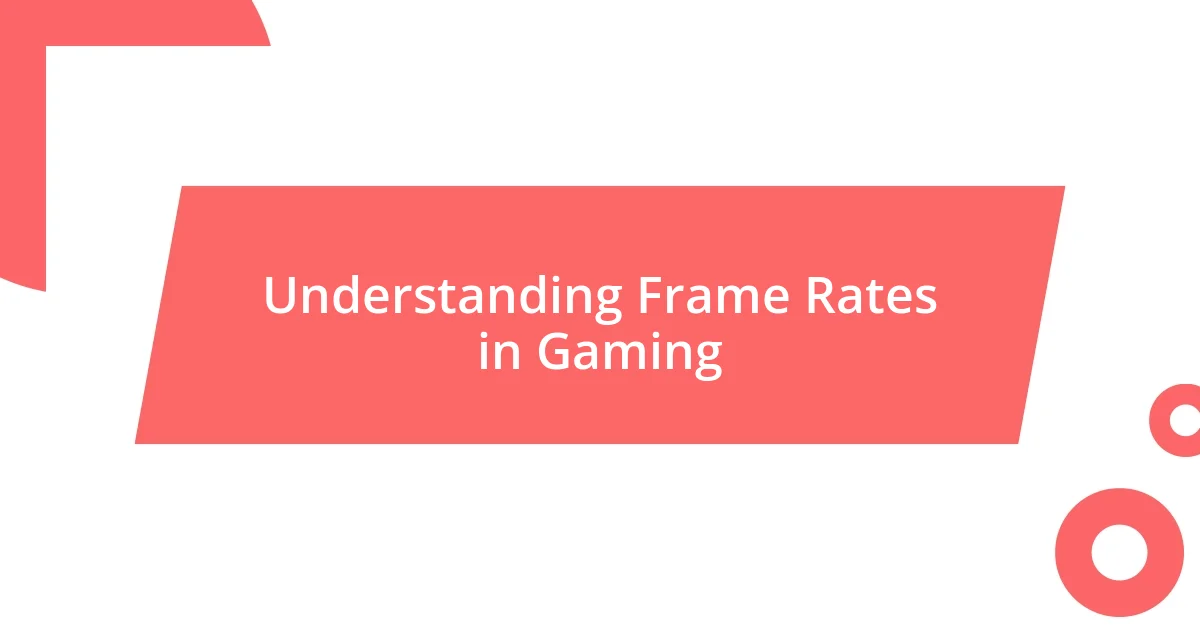Key takeaways:
- Game graphics are crucial for immersion, emotional connection, and overall player engagement.
- Key graphics elements include resolution, lighting, animation quality, color palette, and art style, which collectively enhance the gaming experience.
- Performance metrics such as frame rates and GPU usage are essential for ensuring smooth gameplay and visual fidelity, impacting player satisfaction.

Importance of Game Graphics
Game graphics are absolutely crucial in creating an immersive experience. I remember the first time I played a visually stunning game; I felt like I was truly stepping into another world. Those graphics didn’t just embellish the gameplay; they intensified my emotional connection to the story and characters. Doesn’t it make a big difference when the visuals evoke feelings rather than just serve as a backdrop?
Additionally, compelling graphics can hugely influence a player’s engagement and retention. I’ve noticed that when games present vibrant, detailed environments, I’m more likely to explore every nook and cranny. It almost feels like an invitation to discover secrets, creating a deeper bond between me and the game. When I compare that to games with lackluster graphics, I often lose interest quickly. Have you had a similar experience where stunning visuals kept you hooked?
Finally, it’s fascinating to consider how graphics can set the tone for the entire gameplay experience. When I think about games with unique art styles, like cel-shading or pixel art, I’m reminded of how they can create such a distinct atmosphere. Those artistic choices resonate with certain emotions and themes that enhance the narrative. Isn’t it intriguing how, without even hearing a word, a game’s visuals can communicate so much?

Key Elements of Game Graphics
When I think about the key elements of game graphics, a few factors really stand out. Texture resolution is one that immediately comes to mind. High-resolution textures can make the environment feel much more real. I recall standing in a beautifully designed game world, running my fingers over detailed textures that made me believe I could actually touch them. It brought a level of realism that drew me deeper into the story.
Here are some fundamental aspects that contribute to impactful game graphics:
- Resolution: The clarity of images, affecting everything from environments to character details.
- Lighting: Good lighting can create mood and atmosphere, often determining how a scene feels emotionally.
- Animation Quality: Smooth animations enhance the reference points for movement and help convey emotions.
- Color Palette: The choice of colors can dramatically influence how we perceive the game world and its themes.
- Art Style: Whether it’s realistic or stylized, the art direction sets the overall tone.
These elements intertwine to shape not just how a game looks, but how it feels. I remember experiencing the haunting beauty of a dark, atmospheric game where every shadow and flicker of light created an intense emotional journey. It’s absolutely stunning how these components come together to not only create visuals but also to evoke feelings.

Impact of Resolution on Graphics
When I think about resolution, I often reflect on its critical role in defining the sharpness and detail of game graphics. A high resolution, like 4K, delivers crisp images that allow each texture, shadow, and subtle detail to truly shine. I can recall playing a game where every leaf on a tree seemed to flutter dynamically in the wind, reinforcing the game’s lifelike quality. It was almost as if I could feel the wind myself!
On the flip side, lower resolutions can lead to a blurry or pixelated experience that detracts from immersion. I’ve noticed that in games where resolution is lacking, it’s all too easy to get pulled back into reality, reminded that I’m just staring at a screen. The visuals lose their magical touch, and instead of feeling like I’m part of another world, I find myself counting the flaws. Have you ever felt that jarring shift from being lost in a game to suddenly noticing all its visual limitations?
I’ve also found that resolution impacts not only what we see but how we feel while playing. Higher resolution can evoke emotions more authentically, as I often feel closer to the characters and the world they inhabit. In contrast, poor resolution makes it challenging to connect deeply with the storyline; it feels like trying to read a beloved book through foggy glasses. Wouldn’t you agree that clarity in visuals can significantly elevate the storytelling experience?
| Resolution | Impact on Graphics |
|---|---|
| Low Resolution | Blurred images, lack of detail, disengagement from the storyline. |
| High Resolution | Crisp visuals, profound detail, enhanced emotional connection. |

Lighting Techniques in Game Graphics
Lighting plays a crucial role in shaping the atmosphere of a game. I remember playing a horror game where the flickering candlelight cast eerie shadows across the walls, heightening my sense of dread. It’s fascinating how something as simple as light can amplify emotions, making us feel genuinely unsettled or even exhilarated. Have you ever noticed how a well-lit scene can draw you in, while a poorly lit one might leave you feeling disconnected?
Different lighting techniques, such as diffuse lighting and specular highlights, contribute significantly to realism. I often find myself mesmerized by how reflections on surfaces can make a room feel alive, like in a racing game where the sun glints off polished cars, creating a dynamic interplay between light and shadow. It’s these subtle nuances in lighting that add depth and interest, transforming a static environment into something that feels vibrant and responsive.
Moreover, real-time global illumination is a game-changer for graphics. Imagine walking through a lush forest where the dappled sunlight filters through the leaves, realistically illuminating your path. I’ve had moments in games where the lighting matched the time of day so perfectly that I could almost lose myself in the experience. Isn’t it remarkable how advancements in lighting technology can turn a simple game into an immersive art piece, enhancing not just visuals but also the overall gameplay experience?

Understanding Frame Rates in Gaming
Frame rates are the heartbeat of gaming, influencing everything from the smoothness of motion to the overall feel of a game. Generally expressed in frames per second (FPS), higher frame rates like 60 FPS or even 120 FPS can make a game feel more responsive and fluid. I remember the first time I switched from 30 FPS to 60 FPS in a racing game; the experience was night and day. Suddenly, every turn felt precise, and I could react to obstacles as if my hands had a direct connection to the game.
Experiencing lower frame rates can be frustrating, especially in fast-paced scenarios. When I play a first-person shooter and find it lagging at 20 FPS, it disrupts my rhythm, making me feel like I’m playing in slow-motion. It’s not just about the visuals; it’s about the immersive experience. Have you ever felt a game lose its magic due to choppy movement? It’s like trying to dance in a pair of shoes two sizes too big—everything feels awkward and out of sync.
Interestingly, frame rate isn’t an isolated factor; it often intertwines with other graphics aspects like resolution and lighting. I’ve noticed that in beautifully crafted titles where the frame rate holds steady, everything falls into place: the crisp graphics become more engaging, and the lighting effects shine brighter. Isn’t it delightful when these elements work harmoniously to elevate the gameplay? It’s experiences like these that remind me why I cherish gaming as a medium—it’s not just play; it’s an emotional journey.

Evaluating Graphics Performance Metrics
Graphics performance metrics are essential for determining how well a game runs. I vividly recall sitting in awe during a gaming marathon, analyzing the metrics while the game seamlessly translated my commands into action on the screen. Seeing the frame timing consistently under 16 milliseconds felt like a victory; it’s a clear indication of a smooth experience, isn’t it?
Another crucial metric is the GPU usage percentage, which often reflects how efficiently the graphics card is handling the workload. I remember the moment I upgraded my GPU—before, I had watched the usage spike to 100% in demanding games, but now it comfortably hovers around 70%. Doesn’t it feel empowering when your hardware finally meets the demands of your favorite titles without choking?
Lastly, let’s not overlook the importance of resolution and its relationship with performance. I’ve played games where I had to choose between stunning visuals at 4K or a more fluid experience at 1080p. It’s a tough decision, right? Yet, those moments of deciding what matters more—visual fidelity or seamless gameplay—stay with me, reminding me of the balance we often have to strike in our gaming experiences.















